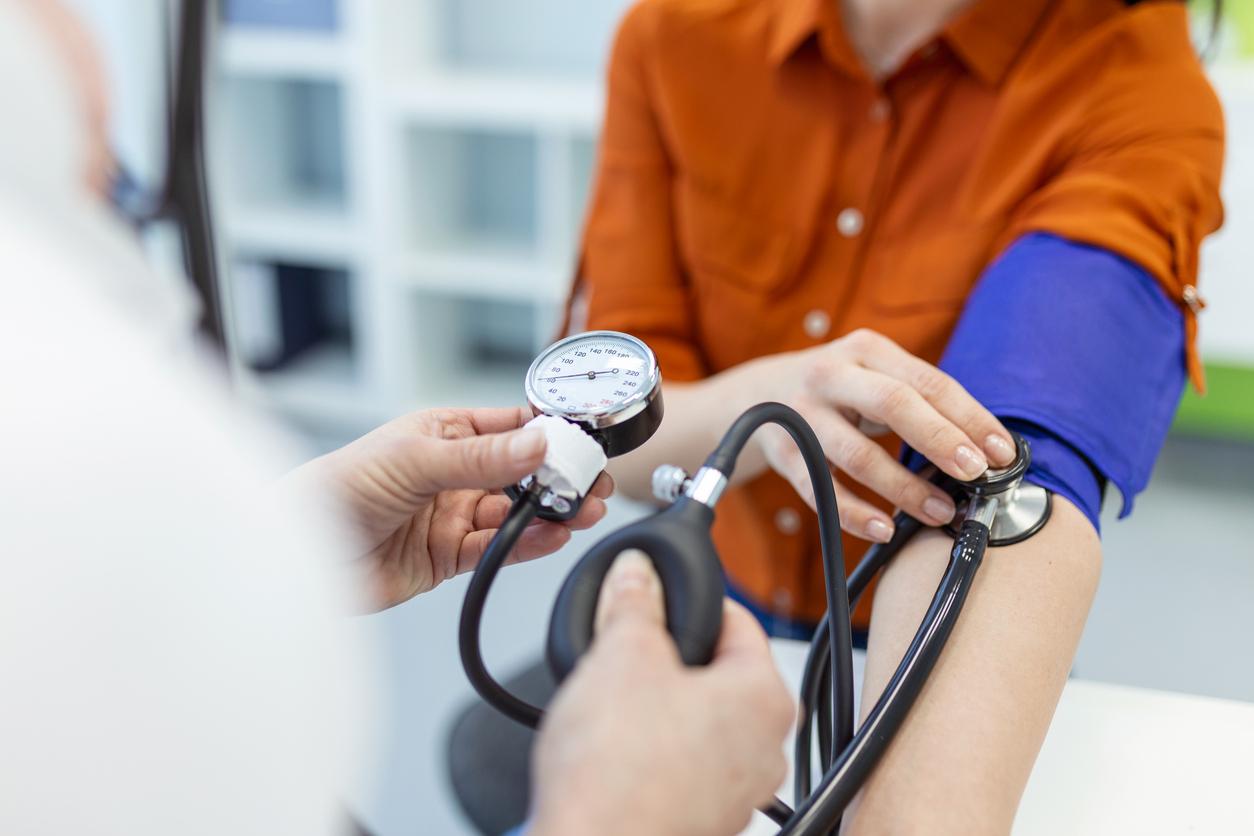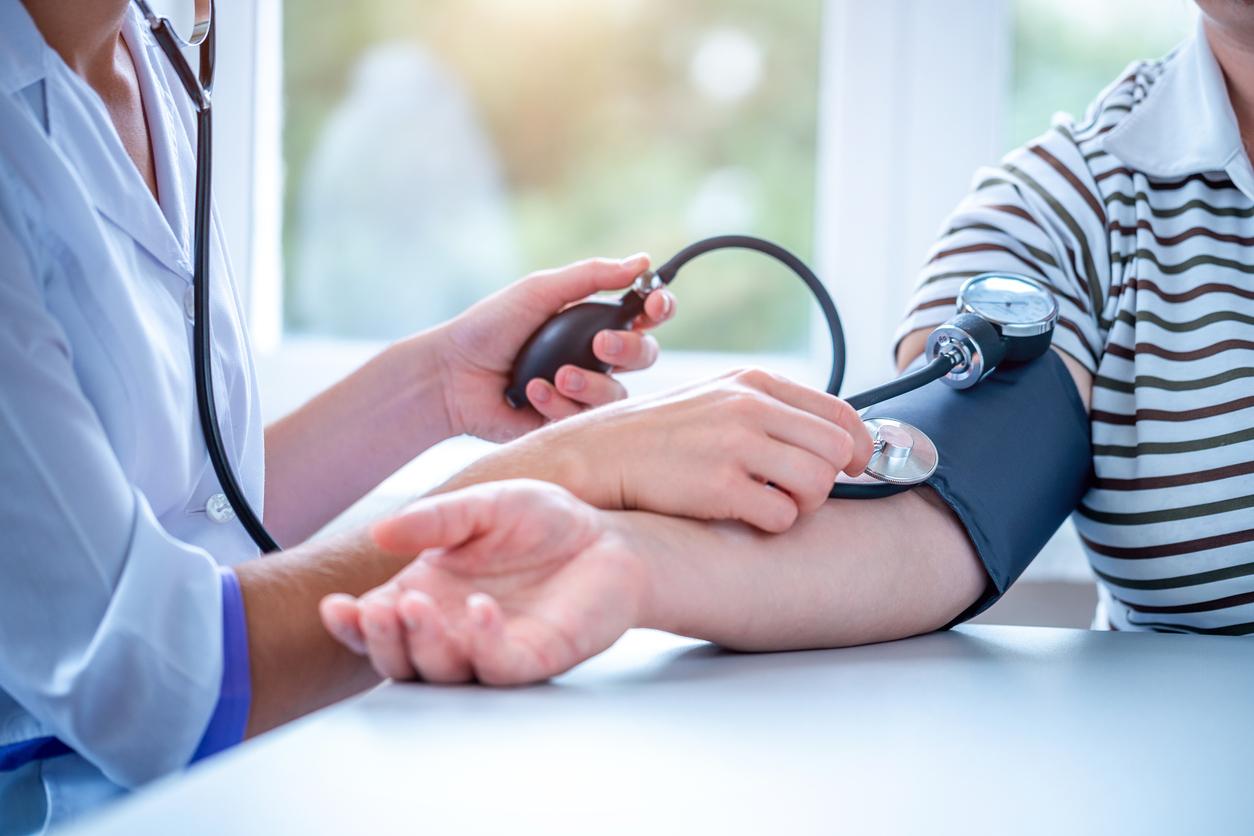What is high blood pressure?
With few symptoms, arterial hypertension (hypertension) generally appears with age. It is estimated that 25% of men and 18% of women are hypertensive, or 14.5 million people in France. When left untreated, high blood pressure exposes people to serious illnesses: stroke, myocardial infarction, heart failure, kidney damage that can cause kidney failure, or damage of the retina sometimes causing loss of sight. Hypertension is confirmed if the blood pressure exceeds 14 for systolic pressure or 9 for diastolic pressure on several measurements. In fact, to be certain that this is not a temporary elevation due to stress, for example, two measurements per consultation during three successive consultations, over a period of three to six months, are necessary to confirm a diagnosis of hypertension.
Causes of hypertension
In more than 95% of cases, the origin of the hypertension is not identified. Treatment then consists of lowering the blood pressure without addressing the causes. On the other hand, the factors that worsen high blood pressure are known: too much salt consumption, stress, tobacco, obesity, type 2 diabetes and physical inactivity.
Treatments
If the lifestyle and dietetic measures are insufficient to lower blood pressure, treatment is put in place. It may use several families of drugs: diuretics, beta-blockers, converting enzyme inhibitors (ACE), angiotensin II antagonists (ARA2), etc., sometimes in combination in the same tablet. In most cases, treatment is aimed at lowering systolic pressure below 14 and diastolic pressure below 9. It is difficult to predict whether a treatment will be effective for a particular patient: a very effective drug for the. one may prove to be insufficient for the other. Medicines for hypertension are fully effective after four to six weeks of treatment. Attention, people who take treatment for high blood pressure must be careful to follow their treatment, even in the absence of symptoms: hypertension is a silent disease that can have serious consequences on the arterial level. Control visits generally take place three to four times a year. In addition, the patient can monitor his blood pressure himself. After six to twelve months during which the blood pressure is controlled, the doctor may decide to gradually reduce the doses and the number of drugs.
.
















